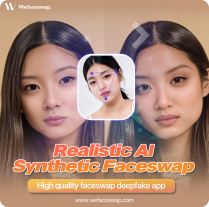The Evolution of Face Swap and Its Rising Popularity
The Evolution of Face Swap and Its Rising Popularity
Blog Article
The Evolution of Face Swap and Its Rising Popularity
The change of face trade engineering from the quirky novelty to a main-stream trend is nothing lacking fascinating. Originating as a fun filter on early photograph apps, experience swaps have today become an integrated part of social media marketing content development and even professional industries. Having its quick development and increasing acceptance, deepfake technology has captivated millions worldwide. Programs like Face Change have played an important role in that sensation, offering sophisticated and revolutionary experience swapping techniques which can be simple to use.

Deepswap is a cutting-edge strong learning technology that allows for high-quality experience trades with just a couple clicks. It utilizes artificial intelligence (AI) calculations to analyze skin functions and seamlessly replace them with another person's. It has opened a full world of innovative possibilities, enabling users to generate jaw-dropping visible outcomes and distinctive content. Let's discover a number of the fascinating tasks you possibly can make with Deepswap.
The Early Times of Experience Exchange
Face exchange technology first appeared in early 2010s with basic photo-editing apps. These early iterations were often clunky, producing hilarious but glitchy benefits that fueled its attraction purely as entertainment. People could swap faces with friends, animals, as well as a-listers, sharing these entertaining photos on social media marketing platforms. While basic, this entry-level technology opened the door for designers to explore its untapped potential further.
Development Propelled by Social Media
Rapidly forward to the mid-2010s, and the rise of programs like Snapchat and Instagram catapulted experience swaps in to mainstream culture. That which was after limited by static images was now being developed into real-time video filters. FaceSwap, Snapchat's iconic contact, turned among its hottest functions, engaging millions of customers daily. Reports claim that by 2016, about 60% of Snapchat consumers had attempted their face change function at the very least once.
Simultaneously, social networking influencers started adopting face trades for material formation, heightening involvement through creativity and humor. That rising tendency further cemented the technology's existence in popular lifestyle, going beyond entertainment and emerging as a robust instrument for storytelling.
Sophisticated Engineering and Broader Programs
Nowadays, advancements in artificial intelligence (AI) and device understanding have increased face exchange tools, making them more specific and convincing than their predecessors. Deepfake technology represents the cutting-edge kingdom of face sharing, allowing hyper-realistic overlays of one face onto another. Beyond entertainment, skilled fields like filmmaking, marketing, and also electronic education have embraced these innovations.

As an example, in 2021, reports suggested that almost 15% of digital marketers were tinkering with AI-driven movie personalization applying sophisticated face swaps. This change shows how experience swap engineering is crossing in to useful applications, encouraging its rising popularity.
A Trend on the Rise
Why is face swaps evergreen is their availability and adaptability. Because of mobile-friendly applications powered by AI, everyone can test out experience trades without specialized expertise. Whether for lighthearted fun or qualified use, the growth of this technology suggests extended growth.
From their simple beginnings as a photo-editing novelty to their modern-day applications in AI and advertising, face change technology has changed remarkably. With more breakthroughs coming, this development is defined to steadfastly keep up its acceptance for decades to come.
Report this page